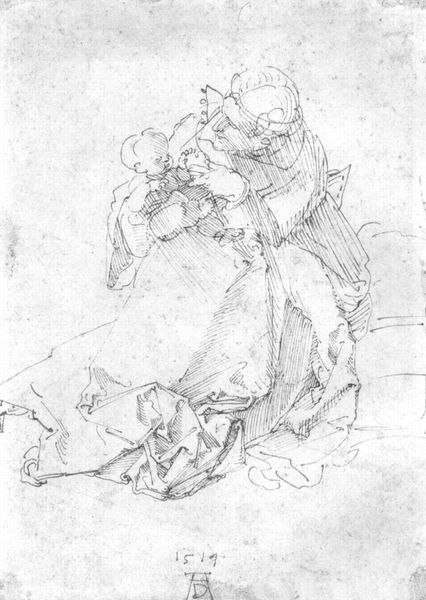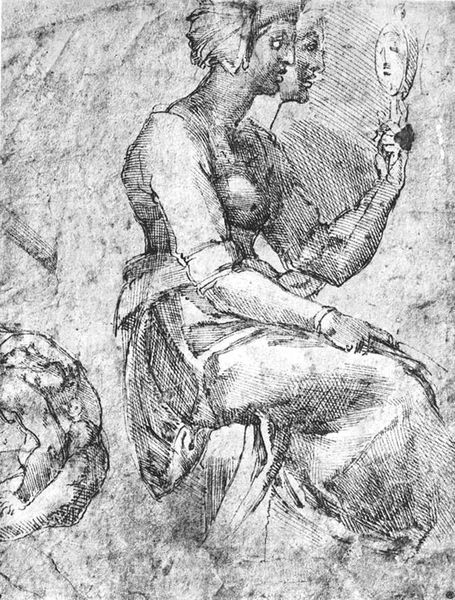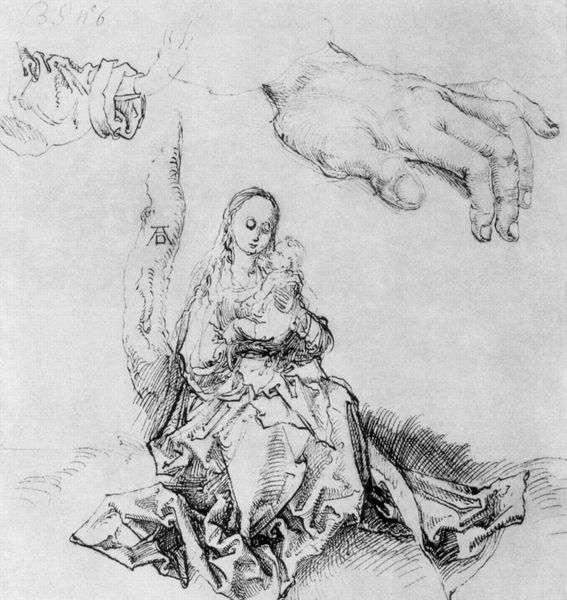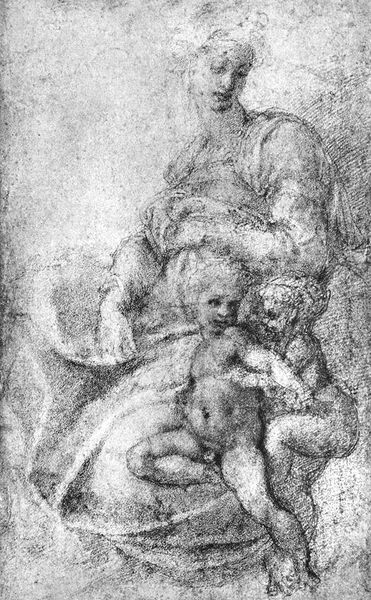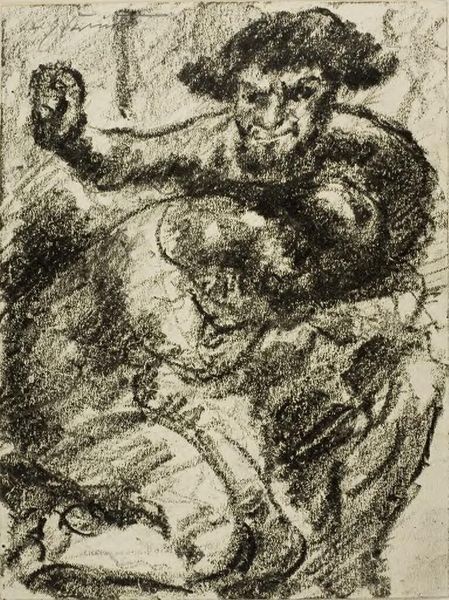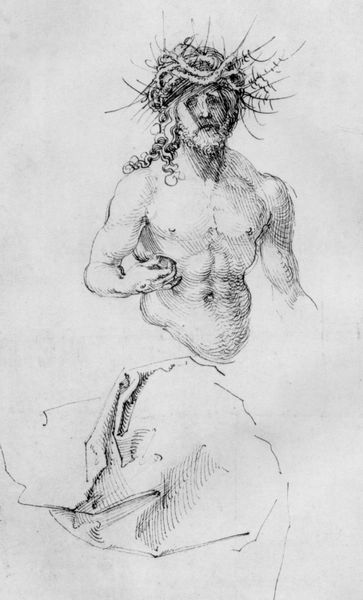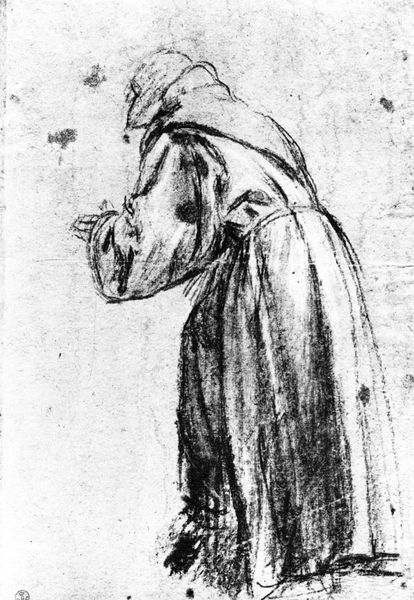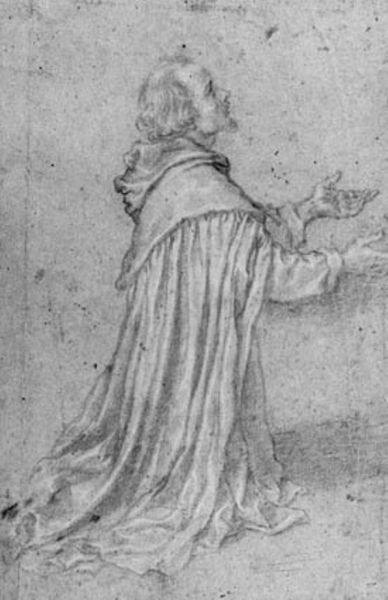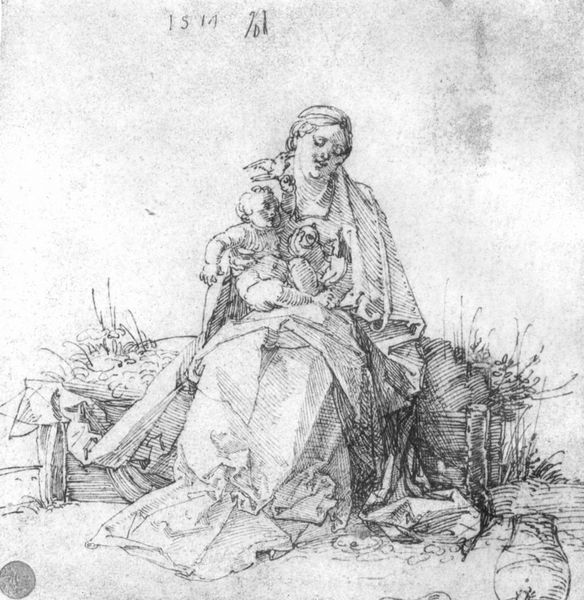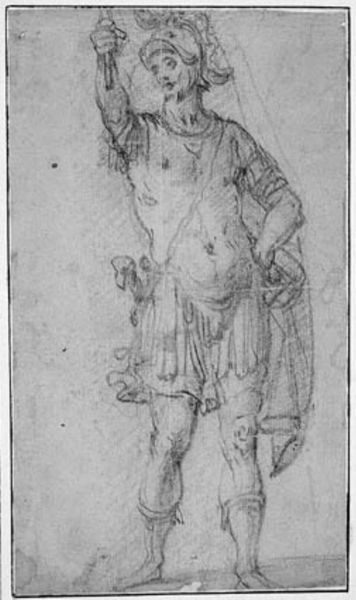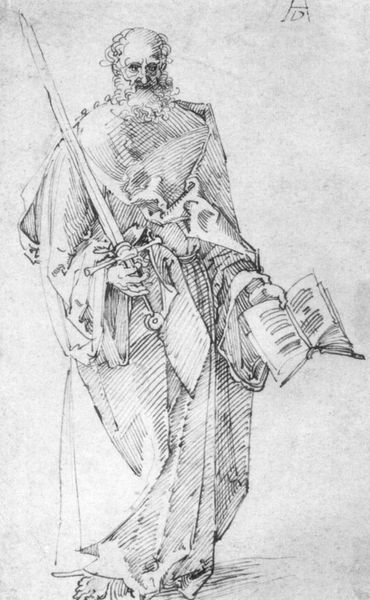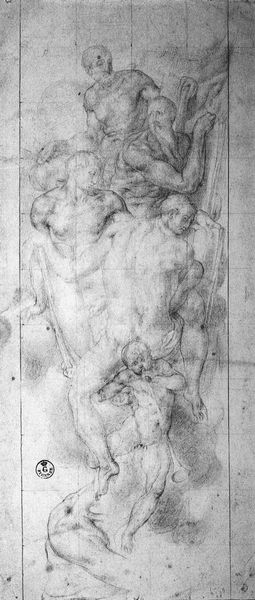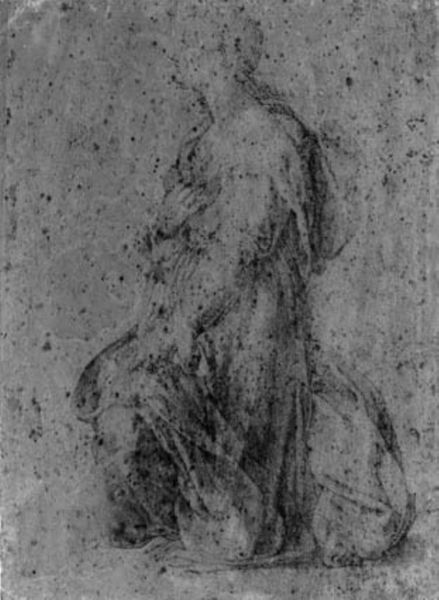
drawing, paper, pen
#
portrait
#
drawing
#
medieval
#
figuration
#
paper
#
child
#
sketch
#
christianity
#
line
#
pen
#
northern-renaissance
Copyright: Public domain
Editor: Here we have Albrecht Dürer's "Crescent Madonna" from 1514, a pen drawing on paper. It’s housed at the Kupferstichkabinett in Berlin. I'm struck by the intricate linework, almost like looking at an engraving, not a drawing. What do you see in this piece, in terms of its structure? Curator: Precisely, let us focus on this method. Note how Dürer employs hatching and cross-hatching, especially evident in the drapery of the Madonna. The density of these lines dictates the tonal values, creating an illusion of three-dimensionality. Where does the artist focus the heaviest concentration of marks? Editor: Definitely, around the folds of her robe and in the shadows of the crescent moon she stands on, it is incredibly detailed. What about the light that seems to radiate behind her? Curator: Observe how the radiating lines behind the Madonna lack modulation, giving the figure weight and form. This stark contrast directs the eye. Editor: So it is that variation which is of prime importance, not simply light, but also surface variations? Curator: Absolutely. The variations within the line work determine not just light and shadow but the texture and overall rhythm of the piece. We should analyze these relationships of directionality in depth, but we are out of time! Editor: I understand. Paying attention to how the formal elements of the line work – density, direction, and contrast – constructs not only form but the focal point is vital to consider! Thanks for your valuable opinion.
Comments
No comments
Be the first to comment and join the conversation on the ultimate creative platform.
